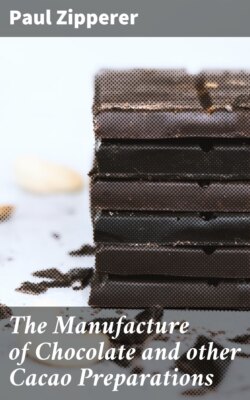Читать книгу The Manufacture of Chocolate and other Cacao Preparations - Paul Zipperer - Страница 14
На сайте Литреса книга снята с продажи.
III. Asiatic Cacao Sorts.
ОглавлениеThe only cacao plantations deserving the name on the continent of Asia are those occurring on the two islands of Ceylon and Java, both producing a sort differing entirely from the Africans, the predominant seedling here planted being the Trinidad-Criollo. The Ceylon-Java bean is, like the genuine Criollo, oval shaped, inclining to a sphere; its kernel is light brown and among the finer sorts even whitish. So both varieties are principally used for colouring and covering the cacao mass, for neither has a very pronounced flavour. The shell is light brown or reddish brown after washing, and appears free from all traces of pulp. It sits loosely on the kernel, at least in the case of the Java bean, and is consequently often met with broken.
Ceylon, with the shipping port of Colombo, produces in a good year from 3,500 to 4,000 tons, about two-thirds of which are traded through London. Direct shipments to Germany have recently been more and more frequent; Australia also claims consideration as a consuming land.
The different sorts, or rather, qualities, for a very careful preparation ensures the excellence of the goods, go under the description fine, or medium, or ordinary, and occasionally are utilised as typical examples. The better sorts come exclusively from plantations, and the ordinary are the result of native enterprise.
Java also produces a large quantity, the cacao here being chiefly planted on the north side of this long, narrow island. More than a half is exported from the port of Samarang, then follow Batavia, Soerabaja and a few minor places, with a total output of about 2,500 tons. The larger proportion of this cacao is sold in the markets of Amsterdam and Rotterdam to Dutch merchants, who pass it on to other consuming countries. England, North America, Australia, China and the Philippines are the chief customers.
Those sorts coming from the neighbouring islands of Celebes, Timor, Bali, Amboina and Lombok may also be considered as sub-classes of the Java; but they do not total more than 75 tons.
